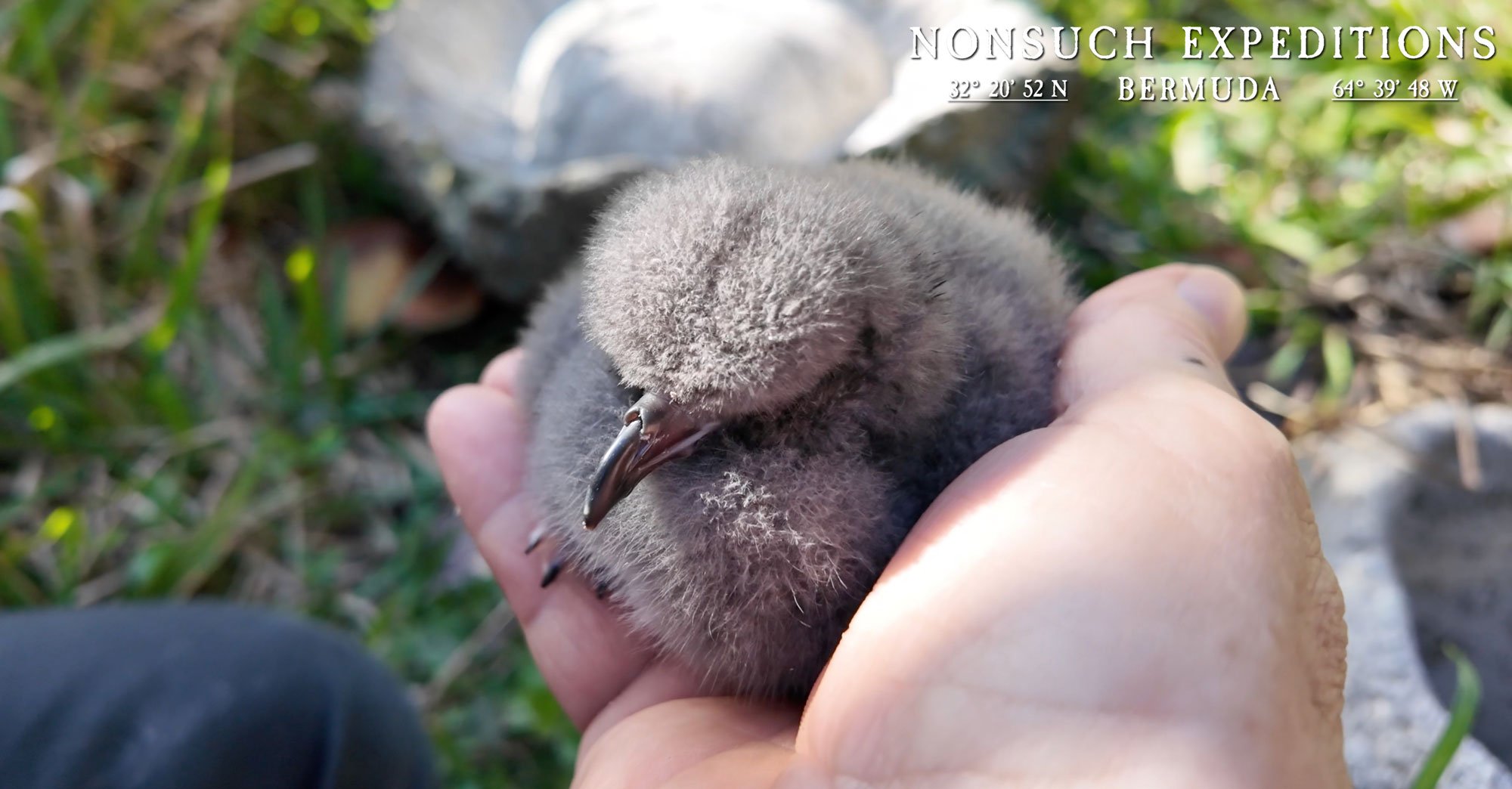“The windy, stormy weather conditions now prevailing for the last several months have continued to severely curtail my monitoring visits to Nonsuch and the Cahow nesting islands, with rainfall in February already recorded at 8.38 " (213mm). So, when calmer, sunny conditions finally broke on Friday 23 February, it had already been 10 days since I had last been out on the islands. I was anxious to get back out, as any time after the 20th of February is when we can expect to see the first of the Cahow chicks hatch.
So, on the 23rd, I was finally able to get out in the boat with my assistant Conservation Officer Peter Drew, Nonsuch Expeditions founder and filmmaker JP Rouja, Overseas researcher Letizia Campioni, and Lynn Thorne as official photographer. Conditions were perfect, being calm and sunny, and I was anxious to make the best of the day, as heavy rain and strong winds were forecast for the following day.
We first went to one of the original small nesting islands, Long Rock, which has the smallest number of Cahows of any nesting island, at only 13 breeding pairs. It is also the lowest in elevation and as a result, has suffered more from flooding and erosion during increasingly frequent hurricanes than any other breeding site. Despite this, things looked good on Long Rock, with 10 nests still with fertile eggs being incubated by adult Cahows (the other 3 nests were confirmed as having failed). Most exciting, 3 of the fertile eggs were already pipping, or in the early stages of hatching, a process that can take up to 48 hours or more.
Once we had finished the check on Long Rock, we moved on to Nonsuch Island, where we had time to check most of the nests at the "A" nesting colony. On Nonsuch, we confirmed the first hatched Cahow chick, in the R819 nest burrow (where it was being brooded by the Female E0768 Cahow). The eyes of this chick were just opening, indicating that it was only 24 - 36 hours old, and already weighed 46 grams, indicating it had already been fed by the incubating adult. In addition, there were 3 other eggs that were beginning to hatch, or pipping, including the egg in the *CahowCam 1 (R831) nest. Hopefully, we will be able to get out again to the islands during the following week, when we hopefully will see several additional newly hatched chicks!”
Jeremy Madeiros | Senior Conservation Officer (Terrestrial Conservation)
You can watch the LiveStream here to see the process unfold in real time. *Please note that as we are still operating on a temporary low-bandwidth wireless internet connection (until our new hardware is in place) the video stream may be sporadic, however, we are recording and archiving the whole process on Nonsuch and will offer a full playback at a later date….


